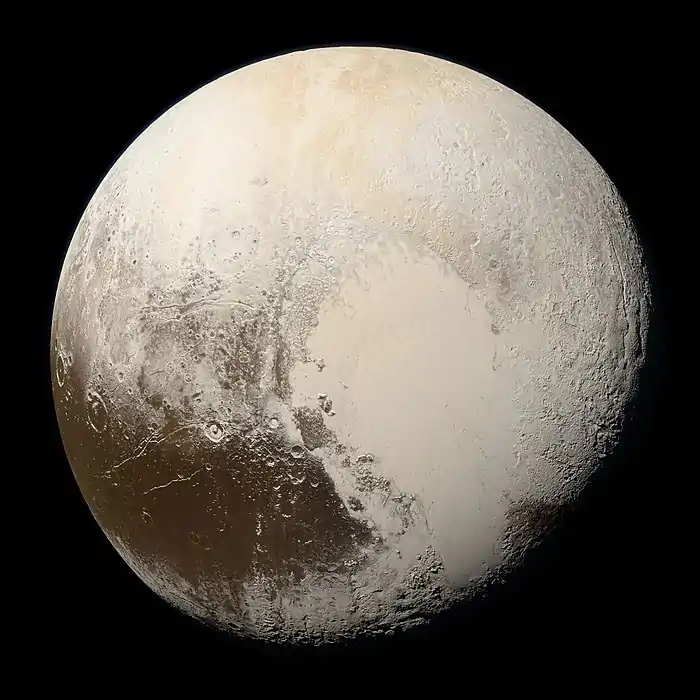(278361) 2007 JJ43
(268361) 2007 JJ43 is a trans-Neptunian object (TNO) orbiting the Sun near the outer edge of the Kuiper belt. If size estimates based on its absolute magnitude are correct, it is a possible dwarf planet.
| Discovery [1] | |
|---|---|
| Discovered by | Palomar Observatory |
| Discovery date | 14 May 2007 |
| Designations | |
| 2007 JJ43 | |
| Orbital characteristics[4][1] | |
| Epoch 27 August 2011 (JD 2455800.5) | |
| Uncertainty parameter 2 | |
| Observation arc | 4813 days (13.18 yr) |
| Earliest precovery date | 10 May 2002 (NEAT) |
| Aphelion | 55.3707 AU |
| Perihelion | 40.2776 AU |
| 47.82 AU | |
| Eccentricity | 0.1578 |
| 330.74 a (120801 d) | |
| 331.84° | |
| Inclination | 12.0623° |
| 272.493° | |
| ≈ 2 April 2037[5] ±6 days | |
| 9.02° | |
| Physical characteristics | |
Mean diameter | 610+170 −140 km (0.13 albedo, H=3.9)[6] ≈530 km (0.08 albedo, H=4.8)[7] ≈558 km (0.09 albedo, H=4.5)[2] |
| 20.8 [8] | |
Its discovery images were taken in 2007, and its absolute magnitude of 4.5 is one of the twenty brightest exhibited by TNOs. Assuming it has a typical albedo, this would make it roughly the same size as Ixion (about 530–620 km diameter). Michael Brown's website lists it as a "likely" dwarf planet.[7]
In a paper in the Astrophysical Journal Letters András Pál and colleagues estimate a diameter for (278361) 2007 JJ43 of 610+170
−140 km.[6]
Observations by Brown in 2012, using the W. M. Keck Observatory, suggest that (278361) 2007 JJ43 does not have a companion.[10]
See also
References
- JPL Small-Body Database Browser: 2007 JJ43 Retrieved: 2011-06-18
- Wm. Robert Johnston (20 August 2011). "List of Known Trans-Neptunian Objects". Johnston's Archive. Retrieved 2012-02-03.
- Marc W. Buie. "Orbit Fit and Astrometric record for 278361". SwRI (Space Science Department). Retrieved 2018-02-18.
- AstDys 2007 JJ43 Summary Retrieved: 2012-02-03
- JPL Horizons Observer Location: @sun (Perihelion occurs when deldot changes from negative to positive. Uncertainty in time of perihelion is 3-sigma.)
- Pál, A.; et al. (2015). "Pushing the Limits: K2 Observations of the Trans-Neptunian Objects 2002 GV31 and (278361) 2007 JJ43". The Astrophysical Journal Letters. 804 (2). L45. arXiv:1504.03671. Bibcode:2015ApJ...804L..45P. doi:10.1088/2041-8205/804/2/L45.
- Michael E. Brown. "How many dwarf planets are there in the outer solar system? (updates daily)". California Institute of Technology. Archived from the original on 2019-05-20. Retrieved 2019-08-13.
- "AstDys 2007 JJ43 Ephemerides". Department of Mathematics, University of Pisa, Italy. Retrieved 2012-02-03.
- A Southern Sky and Galactic Plane Survey for Bright Kuiper Belt Object
- Plutokiller (2012-02-03). "2007 JJ43 doesn't have a big moon. There could be a small one hiding in there". Twitter. Retrieved 2012-02-03. (moonless)
_(cropped).jpg.webp)
